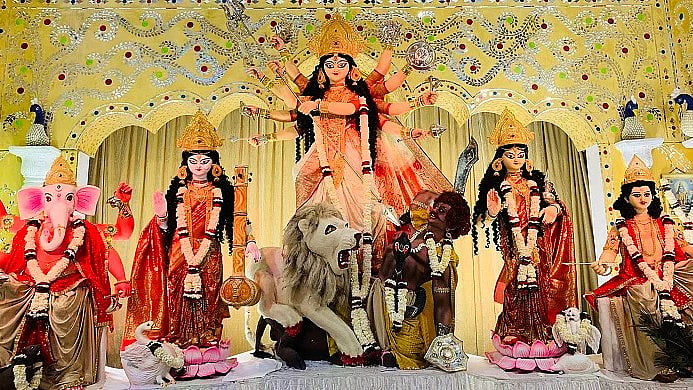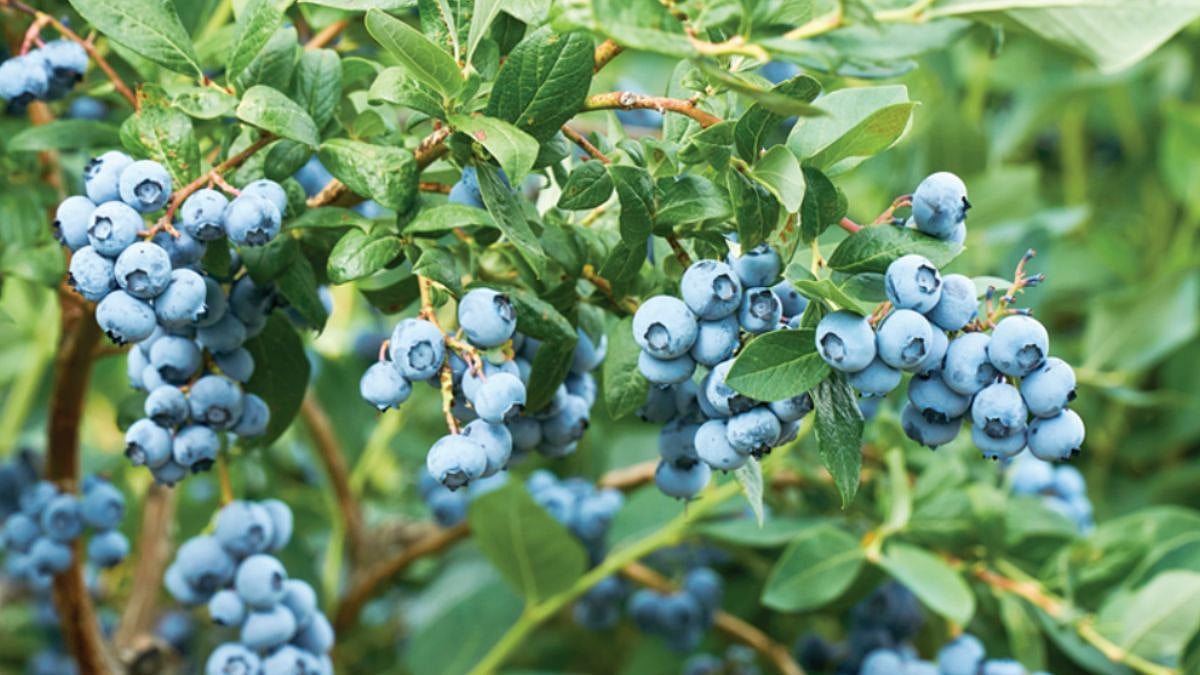Chautaal-Faag and other traditional folk songs played during Holi serve as musical bridges, connecting the young and older generations of Girmitiyas spread across the world to their ancestors' homeland, India. These songs are the heartbeat of their celebrations, and they are trying to preserve and promote these in all possible ways.
The festival of colours—Holi, Phagwa, or Phagua—is celebrated with great fervour in Girmitiya nations worldwide. These nations—Fiji, Mauritius, Suriname, Trinidad, and Tobago, and Guyana, among many others—had significant numbers of indentured Indian labourers, who traced their roots to modern-day Uttar Pradesh, Bihar, Jharkhand and Madhya Pradesh and were known as the 'Girmitiyas'.
"In Girmitiya nations, Holi serves as a reminder of the rich cultural heritage the Indian diaspora has preserved and passed down through generations. Holi is a vibrant and colourful affair in these nations and a time of unity and camaraderie. People from all walks of life come together to celebrate the arrival of spring and the triumph of good over evil," says Raj Mohan, a renowned Dutch-Sarnami musician, singer and lyricist of Indian descent. Mohan, born in Paramaribo, Suriname, spent his early years there and moved to The Netherlands in the early '70s. The festivities include smearing each other with coloured powders known as 'abir' or 'gulal', singing Chautaal, Phagua/Faag, Ullaraa, Jogira and Kabira on traditional musical instruments by the young and old alike, and preparing Holi delicacies like gulgula (sweet fried wheat flour balls), bhajis (curries of pumpkin, potato-peas, jackfruit), kadhi (chickpea flour-curd curry), etc., as a testament to celebrating the festival of colours in its true spirit.
Musical Culture
Pravind Kumar, a Fiji-Indian and an expert in Girmitiyas’ cultural history currently based in Brisbane, Australia, explains that Chautaal, derived from "chaar" (four) and "taal" (beats), is a unique form of folk music that employs narratives from Hindu religious texts to craft lively songs. This folk form has its roots in North India's Awadhi and Bhojpuri-speaking regions. During Holi, men (and sometimes even women, though their involvement declined after the 1970s) sing these songs in groups to the accompaniment of traditional musical instruments, starting with Basant Panchami and concluding with Rang Panchami.
"Chautaal is a vibrant tradition among the Bhojpuri-speaking diaspora scattered across the Caribbean, Fiji, and other countries. While its roots may have diminished in India, Chautaal is a flourishing art form among the Girmitiyas, descendants of the Indian indentured workers," explains Kumar, who reminisces his early years spent in Ba, Viti Levu, Fiji, where his parents (third generation Girmitiyas) were primary school teachers. "I was good at playing Khanjaddhi, Dholak and Jhaanjh (types of traditional musical instruments) and was an active member of the local Chautaal group from age 6. Our day started at 7 in the morning, and during the day, we visited houses in the village, singing 3-4 songs at each house, eating gulgula, and finishing at about midnight. Each locality had 2-3 Chautaal groups, and each thrived doing the same song routine without any competition whatsoever," adds Kumar, who moved to Australia 34 years ago but has kept the Chautaal tradition alive in his new homeland.
Kumar elucidates the Chautaals focus on the episodes of the Mahabharata, including Lord Shiva's wedding, King Dhashratha, his Kingdom Ayodhya, and four sons, Sita's Swyamvaar with Lord Rama, and Lord Rama's return from Lanka after defeating Ravana, among many others, in their songs.
"Even today, Chautaal is sung in community centres and at Holi gatherings in people's homes in these countries," recounts Mohan from his childhood in Suriname, adding how he, along with the Chautaal Mandali (group), used to visit houses of people in the neighbourhood, sing Chautaal for 20 minutes or so, eat delicacies and celebrate Holi. Some popular ones in Suriname that he fondly recollects are Jai Bolo Ramaiyya Baba Ki, Holi Khele Raghubeera Awadh Mein, Sada Anand Rahe Ehi Dware Mohan Khele Holi Ho, Gokul Beeche Janme Kanhai, Hare Sri Ram Liyan Autar, among others.
Preserving Tradition
It is remarkable how traditional Holi folk songs have withstood the march of modernity in the Girmitiya nations while they struggle to exist in India, where peppy Hindi film songs are more likely to be played on Holi, even in the rural pockets. Reminiscing how Chautaal and Faag have almost faded into oblivion in the villages in Bihar where he spent his entire life, Kaithi script expert and former professor Dhruv Kumar recounts, “Now, Faag remains only for namesake. A handful of elderlies sing it on Holi, and that too for formality. The soft melody is almost on the brink of extinction due to the blaring Hindi film songs that rule the roost on Holi. This musical takeover is unfortunate.”
However, in places like the Caribbean, Fiji, Canada, and even the USA, European nations, Australia, and New Zealand, with sizeable descendants of the Girmitiyas, Chautaal and Faag remain a dynamic focal point in their culture even though there is a lack of direct connection to the ancestral Bhojpuri homeland since indentureship concluded in 1917.
Born in Fiji and living in Auckland, New Zealand, software professional Praneil Chandra is a fourth-generation Girmitiya descendant who operates a 24x7 online cultural Indian radio station, Manukau Indian FM. "I started singing and reciting the Ramayan at the tender age of 8. I was introduced to the Ramayan by my school teacher, and I was active in a local Ramayan Mandli in Fiji," says Chandra, a versatile kirtan, bhajan, and Faag singer.
Faag is a Holi folk song that describes playing Holi, the beauty of nature, and the love of Radha and Krishna. Faag includes different types of compositions such as the most popular Chautaal, Jhoomar, Jogira, Kabira, etc. Chandra, who started singing Faag at a young age, remembers going house-to-house with his Mandali on Holi in Cuvu, Sigatoka, Fiji. "Faag is the most difficult genre. However, I fondly remember the beat of the dholak, the colours, and the camaraderie on Holi," he says.

Chandra's radio station plays a Faag every hour during the month of Phalgun/Fagun. "Last year, Manukau Indian FM played eight hours of non-stop Faag and Chautaal on Holi. This year, we aim to do 18 hours, starting at 6 am Australia time and ending around midnight, to enable people living across the globe in different time zones to enjoy the essence of the Holi festivities in the truest form," says Chandra. People worldwide have contributed to the Faag-Chautaal collection for Manukau Indian FM by sending songs. Kumar and Chandra plan to make an open-source online library that allows people easy access to invaluable cultural resources.
Filmy Connect
First Indo-Latin American actor Prabhakar Sharan, who is currently based out of San Jose in Costa Rica but spent his early years in Motihari, Bihar, fondly recalls doing rounds of homes in his village with his father and other elders, singing Faag on Holi. When he ran away from home and moved to Haryana, he enjoyed playing colours to the tune of the traditional folk song, Ragini. The actor regularly hosts Holi parties in Costa Rica for his Latin American friends. "I came here 24 years ago. Back then, there wasn't much knowledge about India. I took pride in sharing our culture through movies and festivals; I have tried to help people understand what India is about and how our 1.3 billion people live together, celebrating every festival with joy," Sharan says. For his first Holi party, he invited people to a gathering wearing white clothes, with lively music, and serving homemade food. "People loved the experience and found the Indian food delicious, and watched our long Bollywood movies with subtitles to make as a part of the celebration," he recalls.
Many of his friends and guests adapted the celebration to Costa Rican taste and enjoyed it with the same energy as a soccer match or bullfight. With more Indians settling in Costa Rica, the Holi tradition has become more prominent. Local families have also started joining in the colourful festivities. "Celebrating Holi in Costa Rica is a beautiful blend of cultures, reflecting the essence of cultural amalgamation. It's a reminder that no matter where we are, our Indian identity remains strong, and our traditions bring joy and pride," he says. The Holi event in 2023 saw around 400 attendees, including Indians and Costa Ricans as well as people from other countries living in Costa Rica. It was held at St. Jude School in Santa Ana and featured colours, music, games, and delicious Indian food.
Community Spirit
Chandra, who has lived in New Zealand for 22 years, argues that Holi celebrations with Faag are rare in New Zealand. "There are Mandalis who do it, but not to the level of what was done in Fiji. Faag celebrations here are done more at a family level. The food is amazing. The popular sweet dish is the gulgula. Fiji Indians celebrate it at their homes while Indians who have migrated here congregate to play colours," Chandra elucidates.
Mohan adds, "The festivities start with Holika dahan. Holi processions are organised in different cities, especially in The Hague and Rotterdam. Holi is also celebrated at various mandirs throughout the country. People sprinkle coloured powder and spray abir on each other, not in houses but in event halls, community centres, and the halls of Hindustani welfare organisations."
Kumar will host a Holi gathering at his home on March 29. Fiji Indians and Indians living in Brisbane will assemble to celebrate the festival of colours against the backdrop of Chautaal. He intends to live-cast the event on his Facebook.
Sharan is looking forward to Holi 2024, hoping for an even more vibrant celebration filled with colours, music, and the warmth of Indian hospitality. However, the Holi celebration for him and his guests remains popular Holi songs from Hindi films because they have a greater outreach than the traditional ones.
Culture Keepers
Kumar's children are part of Chautaal singing, and they actively participate in preserving the tradition, while Chandra, who has two young boys and a girl, has been diligently teaching them Faag so that the culture lives on. “We have kept the culture as it existed in the 1800s in India, a bit like a time capsule,” adds Chandra.
On the other hand, Holi holds a special place in the cultural education of the younger generation, especially in The Netherlands, where it is celebrated with great enthusiasm and attention in the six Hindu primary schools spread across different cities. "It ensures the continuity of this vibrant tradition and instils a sense of cultural pride and identity in young minds," explains Mohan.
The descendants of Girmitiya labourers earnestly endeavour to uphold the shared memory of their ancestors' religious and cultural customs for the younger generations and instil a sense of belonging to their roots and pride to keep it going, which is commendable. Their concerted efforts to preserve, promote and pass down the Chautaal-Faag culture add a vibrant hue to Holi's celebration and give us reasons to go the traditional way, too.














